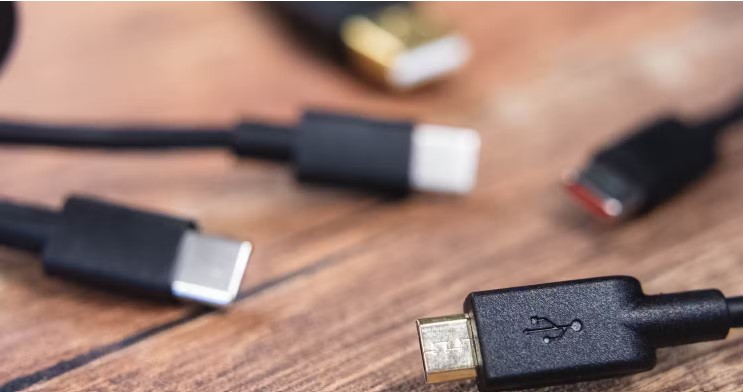Situatie
- USB Gen 1, Gen 2, and Gen 2×2 are generations of USB 3.x that have speeds of 5 Gbps, 10 Gbps, and 20 Gbps, respectively (regardless of the version number).
- USB 3.2 generations have regularly been renamed over the years, but they now simply bear the speed: USB 5 Gbps, USB 10 Gbps, and USB 20 Gbps.
- Manufacturers may not use current official branding, so read labels closely before buying hardware.
- Finding the fastest USB connection used to be easy: choose USB 3.0 instead of 2.0. But now, you’ll need to know the difference between USB 3.2 Gen 1, Gen 2, and Gen 2×2—and what various types of “SuperSpeed” mean, too.
Solutie
Pasi de urmat
USB Naming Used to Be Simple
Once upon a time, USB came in two main flavors, 2.0 and 3.0. All you needed to know about them was 3.0 was faster than 2.0. You could buy a USB 2.0 flash drive and plug it into a computer that had USB 3.0 slots, and it would still work—just at the slower USB 2.0 speeds. Buying a USB 3.0 drive and plugging it into a USB 2.0 port would give you USB 2.0 speeds, too.
If you wanted the fastest speed possible, you’d get a USB 3.0 drive and plug it into a USB 3.0 USB port. It was simple and straightforward. But everything changed with USB 3.1.
USB 3.1 Muddied the Naming Waters

The USB Implementors Forums (USB-IF) maintains USB specifications and compliance, and it’s behind the naming schemes found on USB cables and devices. When it introduced USB 3.1, rather than keep things simple and let that name differentiate from USB 3.0, it called the new standard “USB 3.1 Gen 2.” USB 3.0 was retroactively renamed “USB 3.1 Gen 1.”
To further complicate things, the transfer speeds themselves received names. USB 3.1 Gen 1, originally known as USB 3.0, is capable of 5 Gbps transfer speeds—that’s called SuperSpeed.
USB 3.1 Gen 2 is capable of 10 Gbps transfer speeds—that’s called SuperSpeed+. Technically, it accomplishes this by using 128b/132b encoding in a full-duplex communications mode. Full-duplex communication is exciting because that means information can be transferred and received at the same time. That’s why it’s faster.
The difference between the two was slightly confusing. But, as long as you remembered Gen 2 was better than Gen 1, you were good to go. To help differentiate the speeds, USB-IF also implemented logos, which manufacturer can only use by passing a certification to prove a cable matches the promised specs.
In September 2017, the USB-IF announced the USB 3.2 specification. USB 3.2 is capable of 20 Gbps speeds. That’s double the transfer speeds of USB 3.1 Gen 2. If you’re wondering how the cables are doubling their speed without changing size or connectors, it’s straight-forward. USB products capable of 20 Gbps have two 10 Gbps channels. Think of it as more wiring jammed into the same cable.
Just like in previous iterations, this newer standard is backward compatible for basic usage—but you won’t get the faster speed without all new hardware. If you buy a hard drive that promises a 20 Gbps transfer rate and plug it into an older computer, the hard drive will work, but at slower speeds than the USB ports on your machine can provide. You’ll have to update both ends of the connection to enjoy all the new benefits.
At Mobile World Congress 2019, the USB-IF announced the branding and naming schemes for the new standard. And once again, the previous naming were discarded and changed retroactively. Going forward, what had been USB 3.0, with 5 Gbps transfer speeds, would become USB 3.2 Gen 1. USB 3.1 Gen 2, with its 10 Gbps speeds, would be renamed to USB 3.2 Gen 2.
The 20 Gbps standard would be named USB 3.2 Gen 2×2, breaking the predictable pattern. Physically, this has two 10 Gbps channel, so it literally is 2×2. There’s a logic to the name, but it’s confusing, and you have to understand the hardware to realize it makes any sense.
Comparing USB 3.2 Gen 1 vs. Gen 2 vs. Gen 2×2 Speeds
In case your hardware isn’t using USB-IF’s current recommended branding, we’ve put together a table of information on each generation, what speeds it can achieve, other names the generation has had.
| Generation | Speed | Official Branding | Alternative Branding |
|---|---|---|---|
| USB 3.2 Gen 1 | 5 Gbps | USB 5 Gbps | USB 3.0, USB 3.1 Gen 1, SuperSpeed USB 5 Gbps |
| USB 3.2 Gen 2 | 10 Gbps | USB 10 Gbps | USB 3.1 Gen 2, USB 3.2 Gen 2×1, SuperSpeed+ USB 10 Gbps |
| USB 3.2 Gen 2×2 | 20 Gbps | USB 20 Gbps | SuperSpeed+ USB 20 Gbps |
If you’re wondering about power delivery in addition to speed, that’s pretty simple: regardless of generation all USB 3.x ports deliver a humble 4.5W in charging capabilities. That’s a far cry from the 18W required for fast charging your phone, but it’s at least better than USB 2.0’s 2.5W of juice. So if you have the choice between a USB 2.0 and 3.2 port for charging a device, you’ll always want the 3.2 port (but don’t expect too much from the little guy).
The only other significant difference between these generations is that USB 20 Gbps (Gen 2×2) is limited to USB Type-C ports and cords. You won’t see any USB Type-A or Micro USB connections sporting that label.

Leave A Comment?